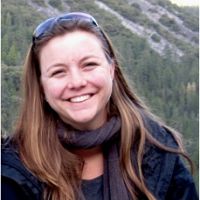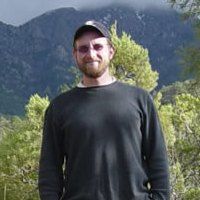Pelletier et al., 2011
Calibration and testing of upland hillslope evolution models in a dated landscape: Banco Bonito, New Mexico, USA.
Pelletier J.D., McGuire L.A., Ash J.L., Engelder T.M., Hill L.E., Leroy K.W., Orem C.A., Rosenthal W.S. Trees M.A. Rasmussen C., and Chorover J. (2011)
Journal of Geophysical Research, 116: F04004,
-
Catalina-Jemez, INVESTIGATOR
-
Catalina-Jemez, GRAD STUDENT
-
Catalina-Jemez, INVESTIGATOR
-
Catalina-Jemez, INVESTIGATOR
Abstract
In this study we tested upland hillslope evolution models and constrained the rates of regolith production, colluvial transport, and eolian deposition over geologic time scales in a dated volcanic landscape in northern New Mexico using field measurements of regolith thickness, geochemical analyses of regolith, bedrock, and regional dust, numerical modeling of regolith production and transport, and quantitative analyses of airborne light detection and ranging (lidar) digital elevation models (DEMs). Within this volcanic landscape, many topographically closed basins exist as a result of compressional folding and explosion pitting during eruption. The landscape has evolved from an initial state of no regolith cover at 40 ± 5 ka to its modern state, which has highly weathered regolith ranging from 0 to 3+ m, with local thickness values controlled primarily by topographic position. Our models constrain the maximum rate of regolith production in the study area to be in the range of 0.02 to 0.12 m kyr−1 and the rate of colluvial transport per unit slope gradient to be in the range of 0.2 to 2.7 m2 kyr−1, with higher values in areas with more aboveground biomass. We conclude that a depth-dependent colluvial transport model better predicts the observed spatial distribution of regolith thickness compared to a model that has no depth dependence. This study adds to the database of estimates for rates of regolith production and transport in the western United States and shows how dated landscapes can be used to improve our understanding of the coevolution of landscapes and regolith cover.
Citation
Pelletier J.D., McGuire L.A., Ash J.L., Engelder T.M., Hill L.E., Leroy K.W., Orem C.A., Rosenthal W.S. Trees M.A. Rasmussen C., and Chorover J. (2011): Calibration and testing of upland hillslope evolution models in a dated landscape: Banco Bonito, New Mexico, USA . Journal of Geophysical Research, 116: F04004, . DOI: 10.1029/2011JF001976
 This Paper/Book acknowledges NSF CZO grant support.
This Paper/Book acknowledges NSF CZO grant support.
Explore Further




